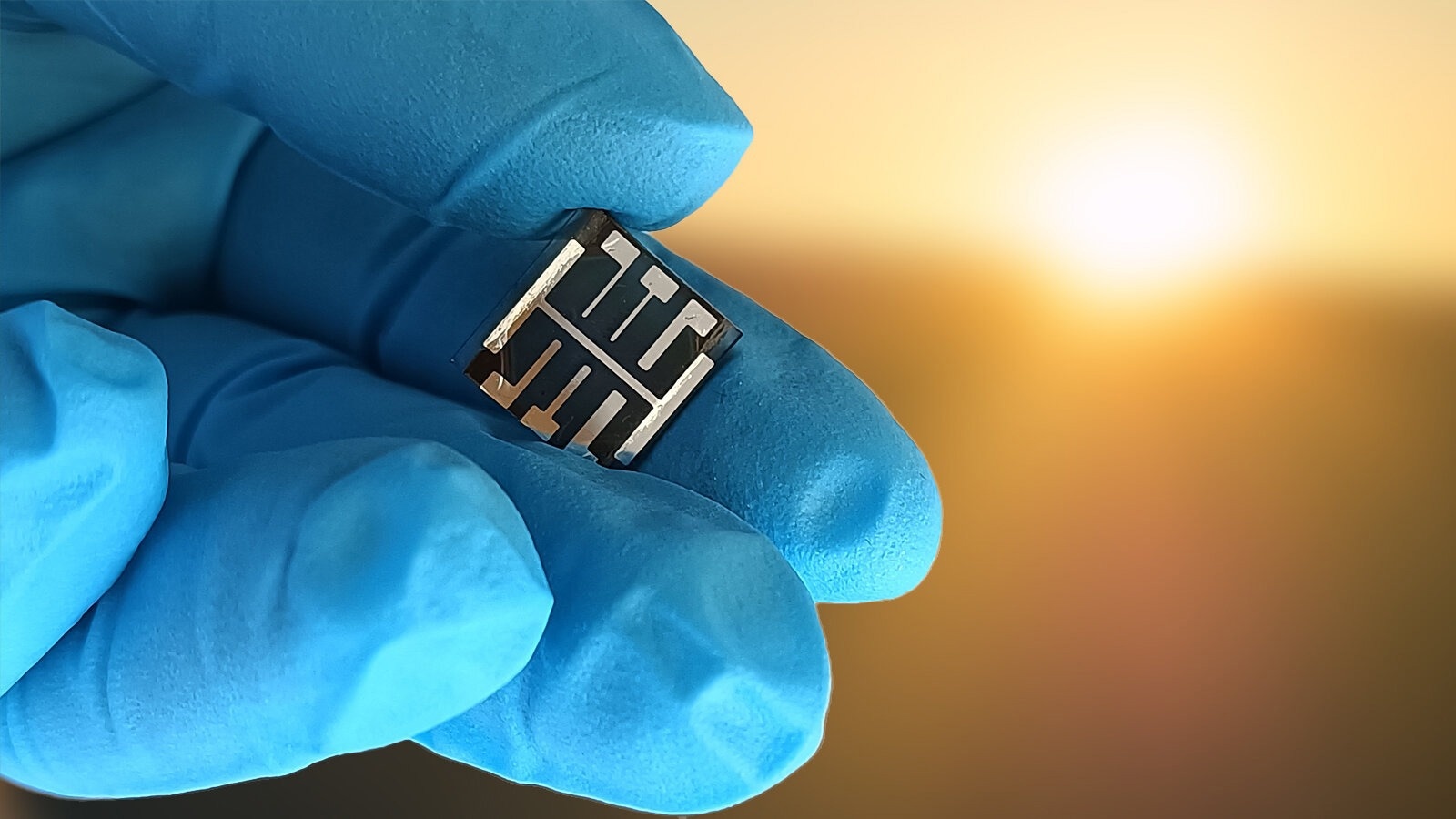Reviewed by Alex SmithJul 25 2022
The results of a collaborative study conducted by the Chemnitz University of Technology and several collaborator universities have shown how slow electrons tend to decrease the efficacy of new organic solar cells.
 Organic solar cells have great potential for shaping the energy transition. Researchers at Chemnitz University of Technology are working on improving the efficiency. Image Credit: Professorship Condensed Matter Optics and Photonics and David Besh.
Organic solar cells have great potential for shaping the energy transition. Researchers at Chemnitz University of Technology are working on improving the efficiency. Image Credit: Professorship Condensed Matter Optics and Photonics and David Besh.
The study outcomes have been reported in the Nature Communications journal.
In the future, photovoltaics will be crucial to the energy grid. Traditional solar cells, such as those based on silicon, a well-known semiconductor material, have already advanced to a point where they are widely used. However, as they require a high vacuum and high temperatures, their production is difficult.
It takes up to five years for the energy that has been utilized for production to be offset by operation. This is where solar cells relying on organic semiconductors can make a difference as they can be printed in an energy- and cost-saving method.
But there are limitations that need to be analyzed elaborately. A research group headed by the Professorship of Optics and Photonics of Condensed Matter (Head: Professor Dr. Carsten Deibel) at the Chemnitz University of Technology has analyzed which primary factors are crucial for the power restriction of organic solar cells.
The study’s lead author is Christopher Wöpke, research associate at the Professorship of Optics and Photonics of Condensed Matter at the Chemnitz University of Technology.
Researchers from the universities of Bayreuth, Bern (CH), Durham (UK), Erlangen-Nuremberg, and the Advanced Light Source Berkeley Lab (USA) collaborated with Wöpke on the study. Amongst other things, the team discovered the fact that transport resistance severely restricts the performance of organic solar cells.
The significance of such outcomes for the development of highly effective solar cells enabling high-throughput production is especially evident in the course of the energy transition.
Organic semiconductors, dissimilar to their silicon counterparts, could be manufactured at room temperature by making use of the printing processes. They need considerably less energy for production along with comparable degrees of photovoltaic conversion efficiency.
Novel organic solar cells are approaching an efficiency of 20% under laboratory conditions. This makes them competitive in an increasing manner.
Critical Importance of Transport Resistance Demonstrated
In solar cells, organic semiconductors have the potential to capture sunlight very well, then convert solar energy effectively into electrical energy and have a fantastic energy balance. But, the low mobility of the charge carriers present in such materials is still a significant technological task.
This is because of the fact that efficiency and conductivity rely on it. A renowned challenge is that the slow charge carriers should be extracted from the organic solar cell before recombination can occur. This is the only way in which solar electricity can be utilized.
One more difficulty was experienced only a few years ago by researchers from Freiburg and Potsdam for organic solar cells. The loss of photovoltage at the point of utmost power is due to the slow-moving charge carriers.
This loss becomes highly pronounced as organic solar cells, which negatively affects efficiency. The significance of gaining insights into this loss mechanism, that is, the voltage loss as a result of the transport resistance, only really becomes obvious with the publication that has been currently presented by Chemnitz scientists.
More Defects Due to Aging of the Organic Material
The effective organic solar cells, comprising a mixture of molecules and polymers known as non-fullerene acceptors, were aged in various expedited methods. The participating researchers examined such photovoltaic devices utilizing complementary techniques.
For thermally accelerated degradation at high temperatures, we were able to show that the properties of the absorber material and the interfaces remain remarkably stable.
Dr. Carsten Deibel, Professor, Chemnitz University of Technology
The absorber material is known as the light-absorbing layer.
The interface explains all regions where the two semiconductors tend to touch the electrodes. One exclusion is the aging-related formation of defect states as a result of variations in the nanostructure of the photoactive layer, which the team was able to note, stated Deibel.
The research team discovered that the connected increase in transport resistance is considered the main reason for the decrease in the fill factor as a result of the expedited thermal degradation.
The fill factor is known to be one of three factors that have been used to determine the solar cell’s performance. The lower fill factor caused due to aging decreases the efficiency of the energy conversion.
Wöpke emphasized, “We needed extensive complementary methods to distinguish between changes in the absorber layer and the interface to the electrodes, as well as between recombination and transport resistance. Therefore, the multidisciplinary expertise of all teams was invaluable.”
One of the key findings of our study is that transport resistance is a dominant performance-limiting mechanism in modern organic solar cells that needs to be addressed. Even freshly processed photovoltaic devices show this loss, which could be overcome by even a slight suppression of trap formation.
Dr. Carsten Deibel, Professor, Chemnitz University of Technology
Journal Reference:
Wöpke, C., et al. (2022) Traps and transport resistance are the next frontiers for stable non-fullerene acceptor solar cells. Nature Communications. doi.org/10.1038/s41467-022-31326-z.